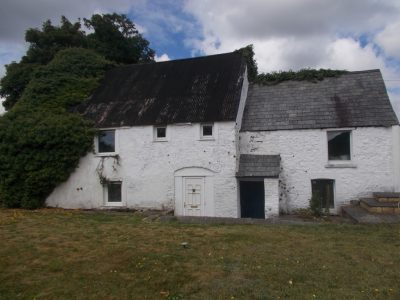Brynsadler Mill

Nestled along the River Ely, stands the oldest building in Pontyclun – Brynsadler Mill. This venerable structure, also known as “The Great Mill” or “Y Felin Fawr,” has occupied its present location where the Cowbridge Road spans the river for a time immemorial.
Its original purpose was that of a grist mill, where the local populace would bring their harvested grain to be ground into flour, a vital staple for sustenance. The mill’s origins can be traced back to at least the 13th Centrury, for it is recorded in the will of Richard de Clare upon his demise in 1262, wherein it was referred to as Brosley Mill.
This ancient mill held a privileged status as the sole facility to which the tenants of the Lordship of Meisgyn and the Manor of Pentyrch and Clun were beholden to bring their grain for milling. It was a duty owed to the chief lord, whose demesne encompassed the mill. However, this manorial function had long fallen into disuse by the 16th century, and the mill was subsequently leased to the local gentry, who in turn sublet it to working tenants.
Records indicate that as early as 1540, the mill was held by John Thomas Bassett of Pencoed in Capel Llanilltern, and by 1570, it had passed into the hands of his widow, Dame Elizabeth Walwyn. Shortly thereafter, it came into the possession of George Mathew, reputed to be the base-born son of William Mathew of Radyr, who owned the estate of Bryn Rhydd, now known as Lanelay Fach in Talbot Green.
In 1638, the mill was leased to Thomas Mathewe of Castell Mynach, and by 1671, it remained in the ownership of his family, with his grandson Thomas Mathew holding the lease. As the 18th century drew to a close, the lease was held by Christopher Bassett of Lanelay, at an annual rent of 18 shillings. It was during this era that the Bassett family undertook the reconstruction of the mill.
Over the ensuing decades, the mill passed through the hands of numerous proprietors, until by 1935, it had fallen into disuse, though its wooden water wheel remained intact until the mid-1960s.
Today, the mill race, the channel through which water flowed to power the mill, can still be traced in the adjacent field, a lingering reminder of the industrial heritage that once thrived in this gentile spot.
For more information about the history of the community of Pontyclun please visit our online museum